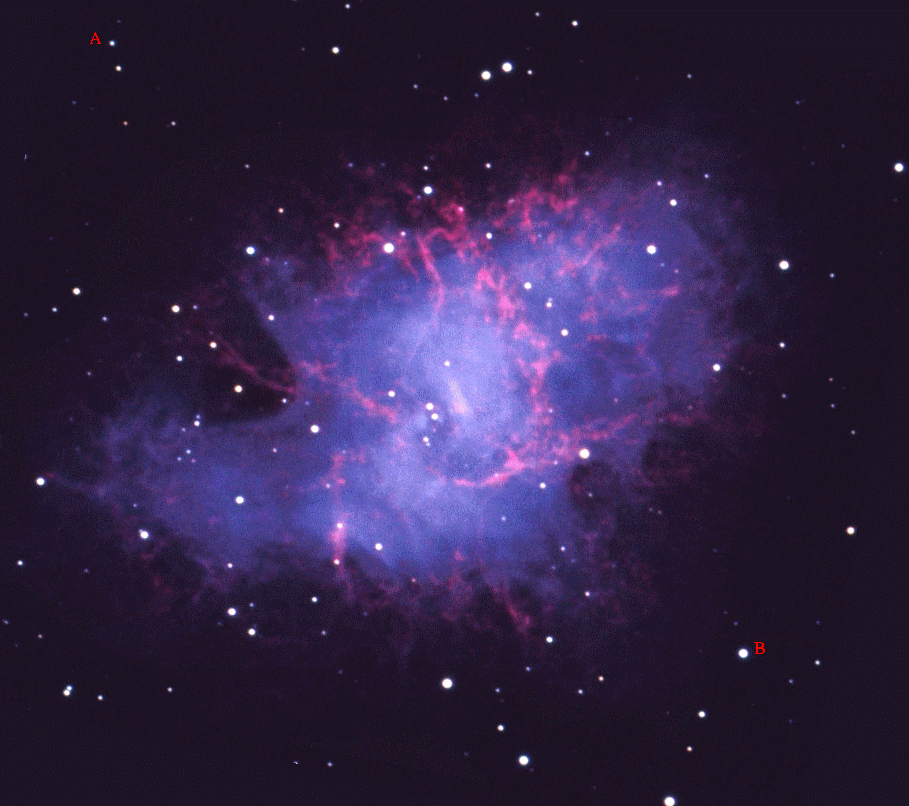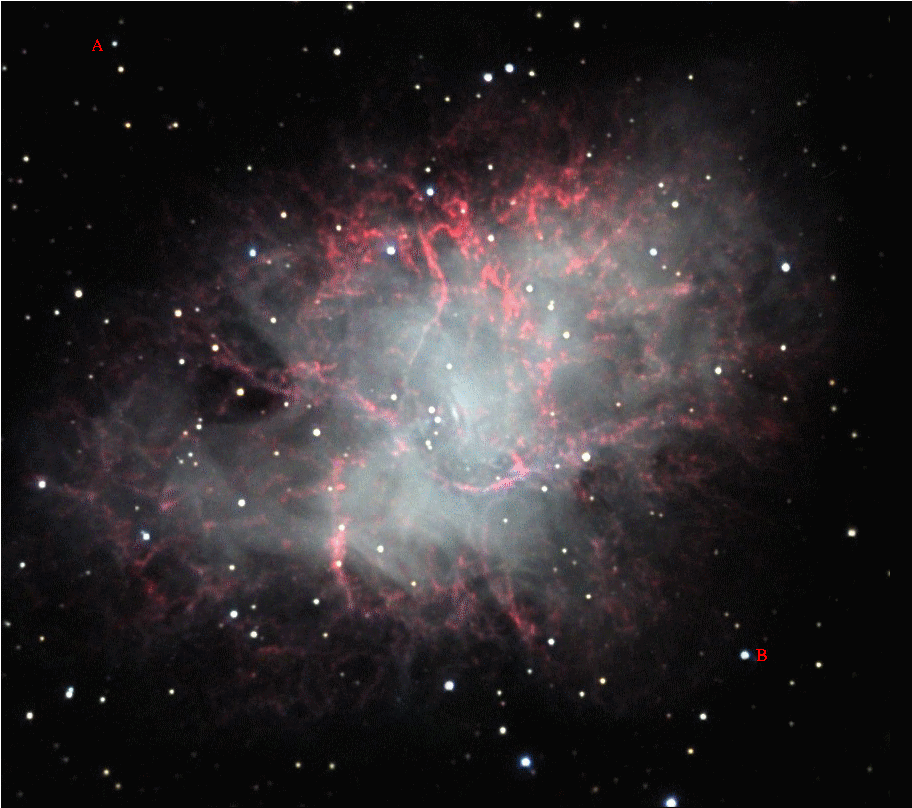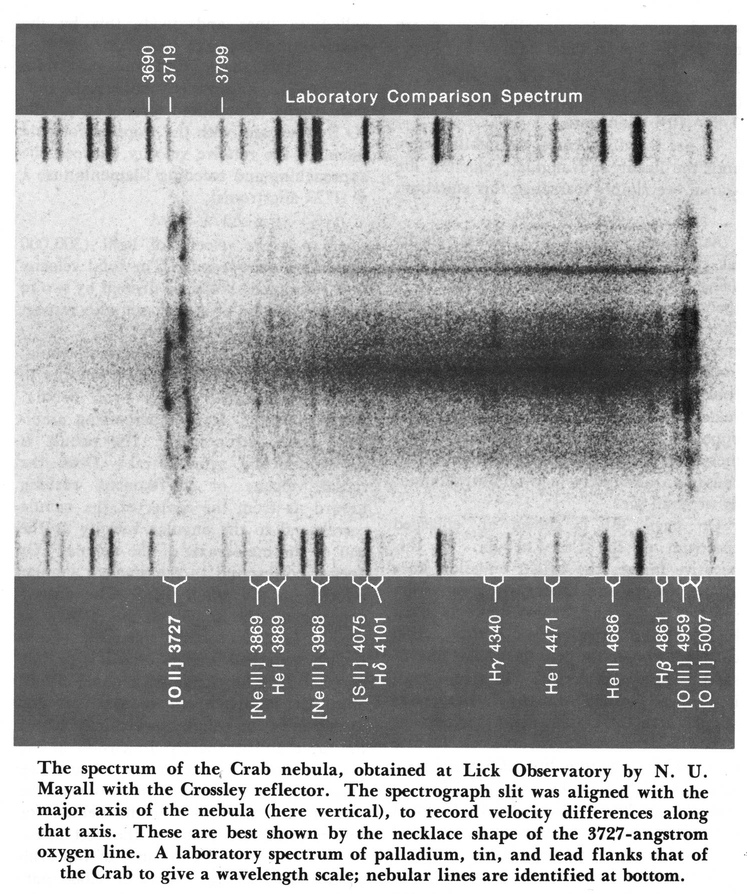
Photograph taken by Bill Schoening with the 4-m Mayall Telescope at Kitt Peak on Ektachrome film
 Copyright © Michael Richmond.
This work is licensed under a Creative Commons License.
Copyright © Michael Richmond.
This work is licensed under a Creative Commons License.
The Crab Nebula is the result of a supernova explosion which was seen by astronomers in Asia in the year 1054 AD. The explosion blew the outer layers of gas off a star, and the ejecta has been flying outwards through space at high speed ever since. Here are a couple of pictures showing the expansion.
First, a picture taken in 1973:

Photograph taken by
Bill Schoening with the 4-m Mayall Telescope at Kitt Peak
on Ektachrome film
Next, a picture taken in 2000:

Image taken by
Adam Block with the Kitt Peak Visitor Center's 0.4 m telescope
and a CCD camera. Courtesy of
Adam Block,
NOAO and
NSF.
Note the two stars marked "A" and "B". To measure the distance between them (or other features), do the following:
Here's an animated image which blinks back and forth between the two. Note how the stars (mostly) remain fixed between the exposures, but the gas moves.

You will need to use the spectrum of the gas to estimate the speed with which it is expanding. The spectrum is show below. The units of wavelength are Angstroms: one Angstrom is 10^(-10) meters.

 Copyright © Michael Richmond.
This work is licensed under a Creative Commons License.
Copyright © Michael Richmond.
This work is licensed under a Creative Commons License.